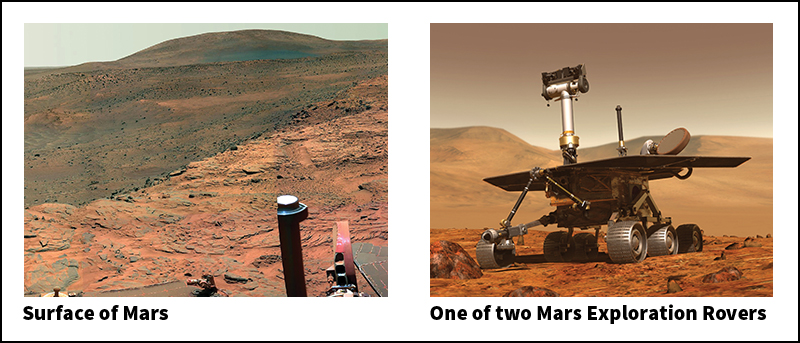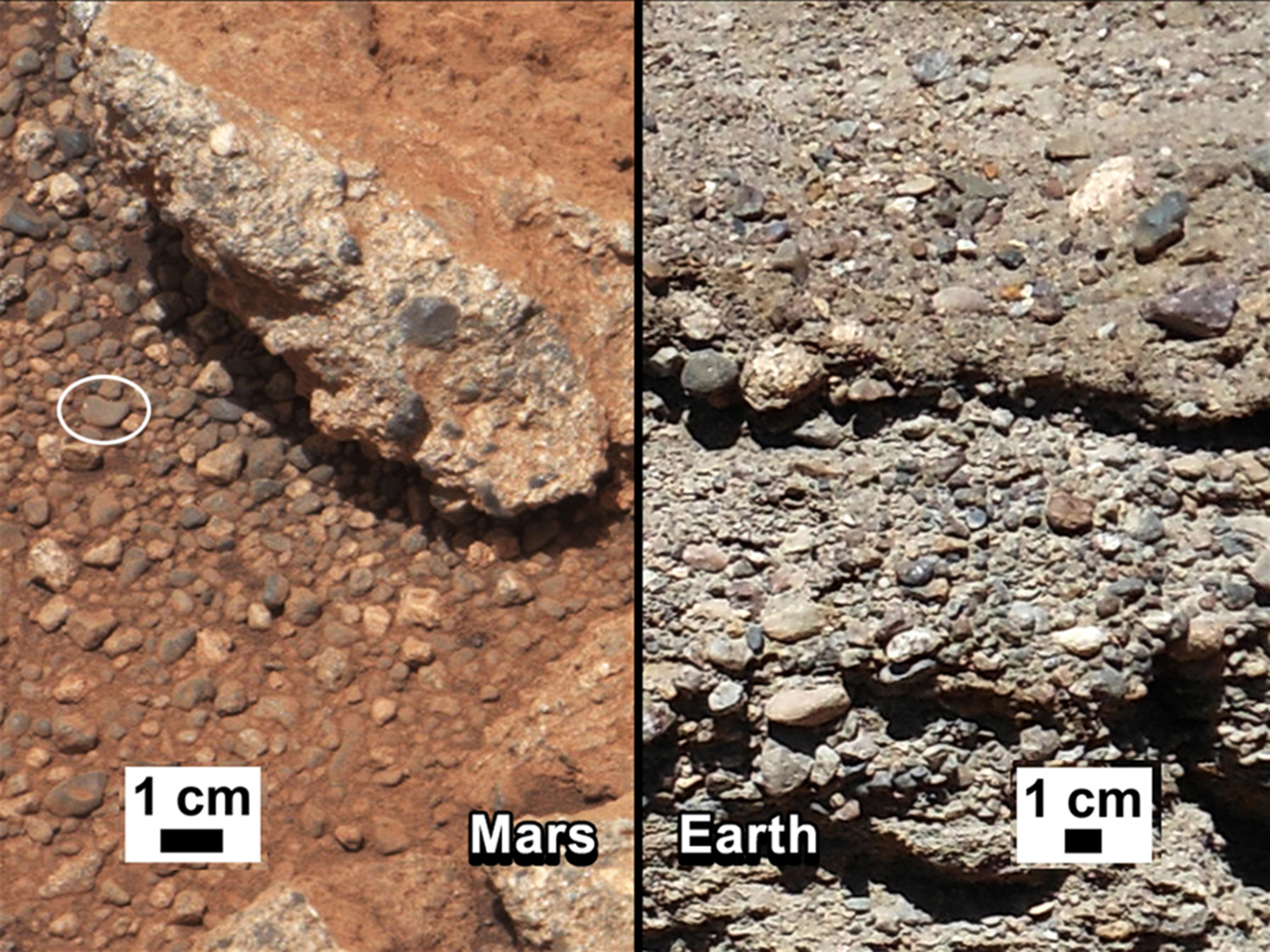Mars Exploration Rover Mission consisted of two robotic rovers sent to Mars. The rovers were nicknamed Spirit and Opportunity. They were sent to study the history of water on the planet. Engineers and scientists at the Jet Propulsion Laboratory designed and built the rovers for the United States National Aeronautics and Space Administration (NASA). The rovers carried scientific instruments created by teams of scientists and engineers from across the United States and Europe.

The surface of Mars appears dry and cold. However, orbiting spacecraft have found clues that the planet might once have been much wetter and warmer. Scientists designed the two rovers to identify and analyze Martian rocks and soils that could show signs of past action by water. Such signs include the presence of minerals and structures that, on Earth, commonly form in the presence of water.

Each rover carried an identical set of scientific instruments, including cameras and spectrometers. A spectrometer spreads out light or other types of radiation into a range of wavelengths called a spectrum. Scientists can analyze the spectrum reflected or scattered by a rock or soil sample to study the sample’s composition. Some of the rover’s instruments were attached to the end of a robotic arm. The arm could position the instruments for close-up analysis of rocks and soils. The arm also carried a grinding tool for exposing the insides of rocks.
NASA launched Spirit on June 10, 2003. Opportunity followed on July 7. Spirit landed on Jan. 4, 2004, in Gusev Crater. The crater is an impact basin, a vast hollow created by a large asteroid or comet strike. Scientists suspect the crater once held an ancient lake. Opportunity landed three weeks later in Meridiani Planum, a broad plain on the planet’s opposite side. Planners chose the site because it was known to contain hematite. Hematite is an iron-bearing mineral. On Earth, it generally forms in the presence of water.
The rovers were originally designed for a 90-day mission. But both Spirit and Opportunity continued to gather information on the surface of Mars without any major setbacks for more than five years. It was not until early 2009, when Spirit became permanently trapped in a bed of loose soil, that either rover ceased to function as intended. NASA ended Spirit’s mission in 2011.
Opportunity continued to explore the surface of Mars. In 2013, the rover detected certain clay minerals that form only in the presence of water. This discovery was proof that liquid water once existed on the surface of Mars. However, Opportunity ceased all communication with NASA following a historic global dust storm that began on Mars in June 2018. In the following months, efforts by NASA controllers to re-establish contact were unsuccessful. NASA announced that the mission was officially ended on Feb. 13, 2019.
See also Mars (Observation by spacecraft); Space exploration (Exploring Mars) .
